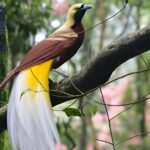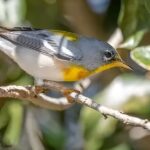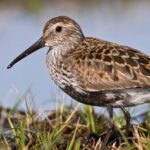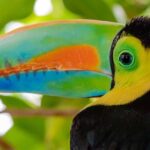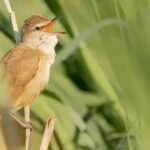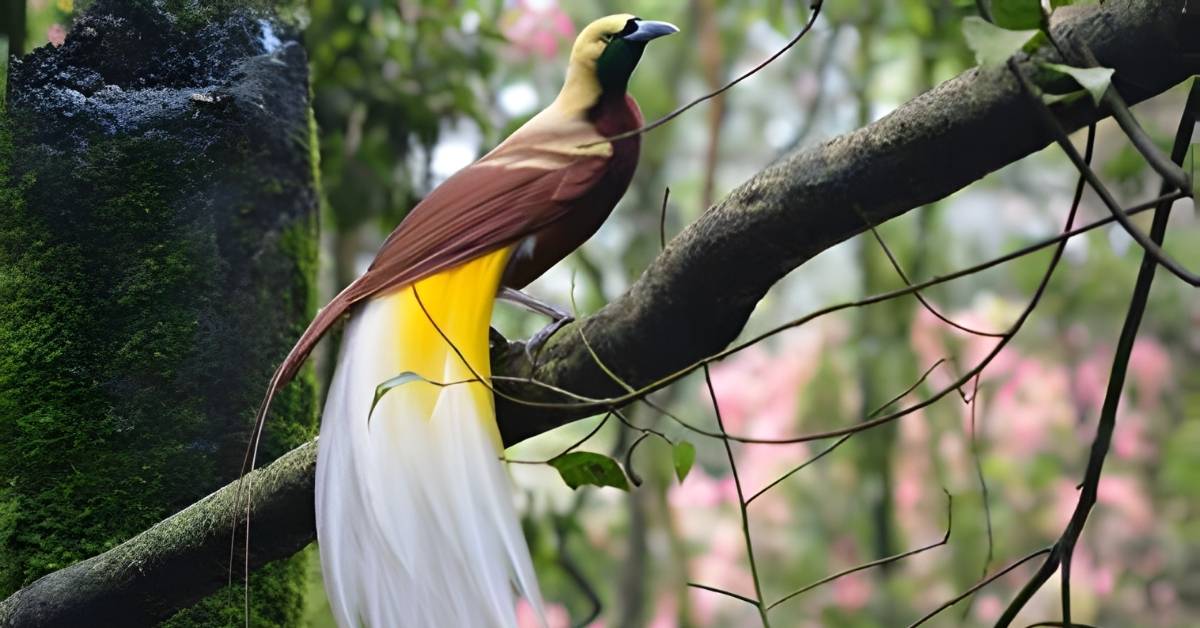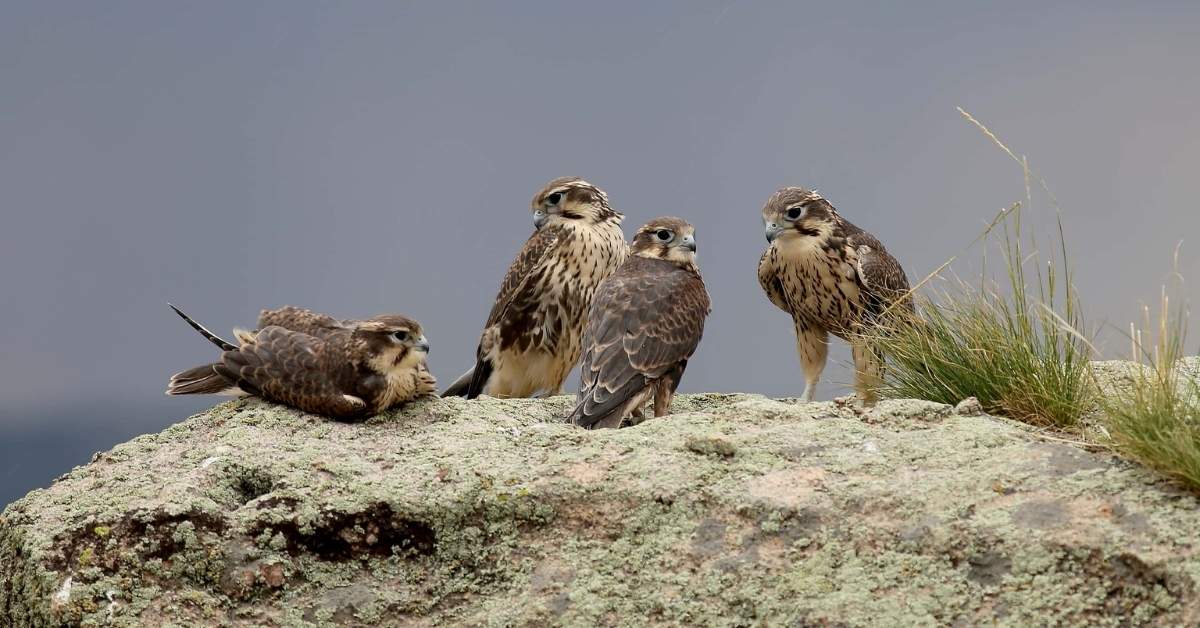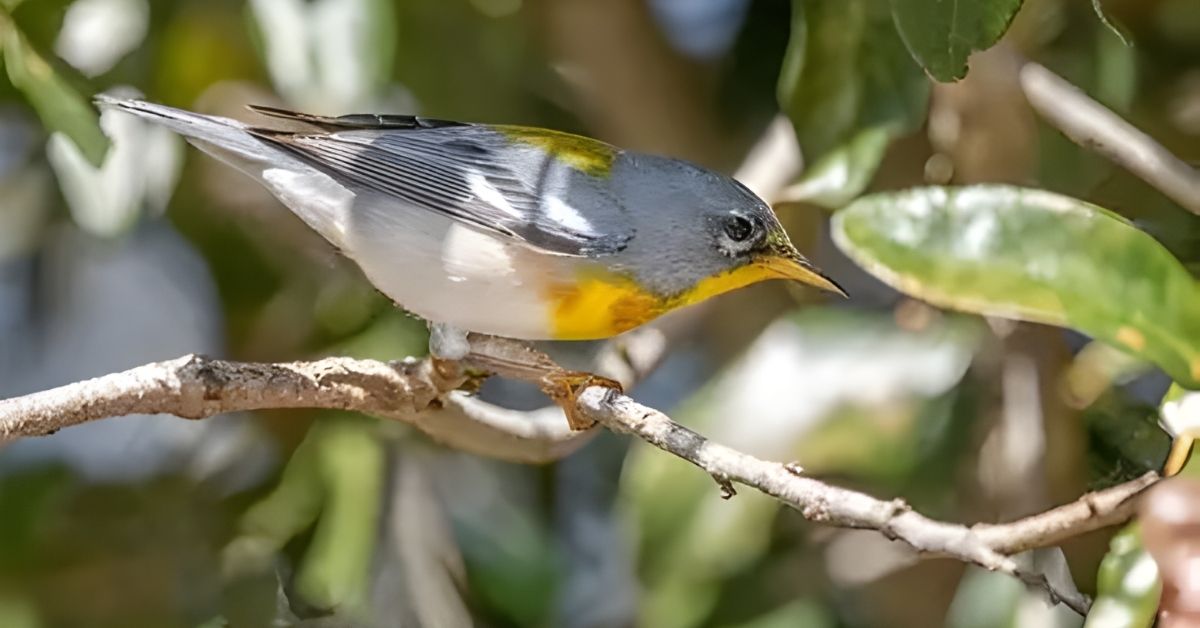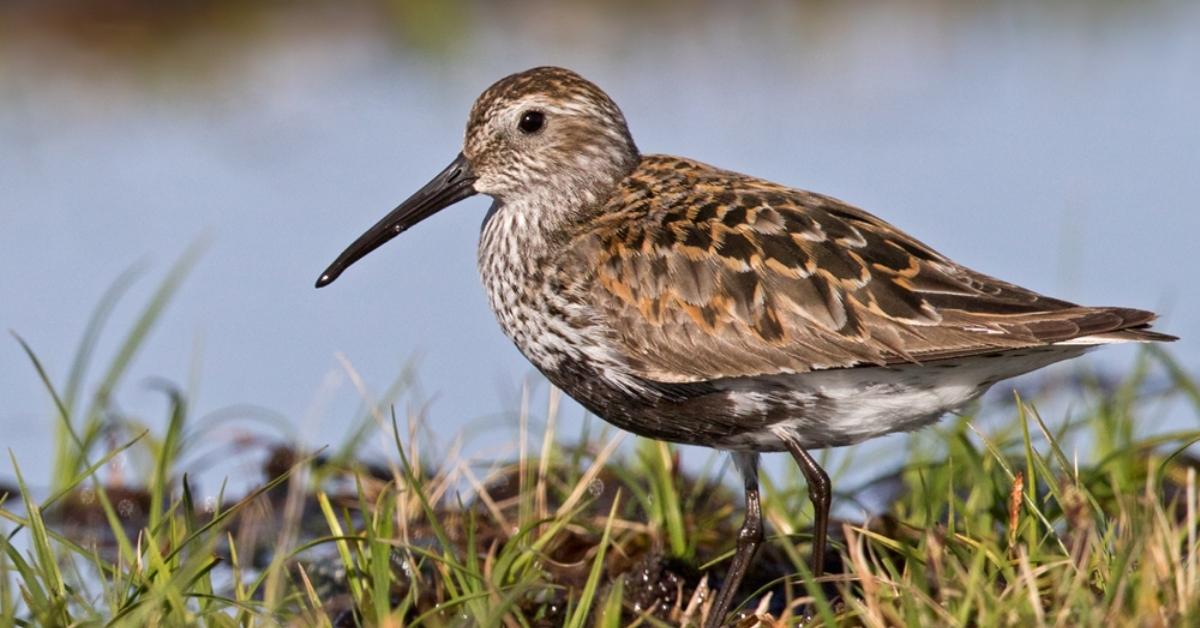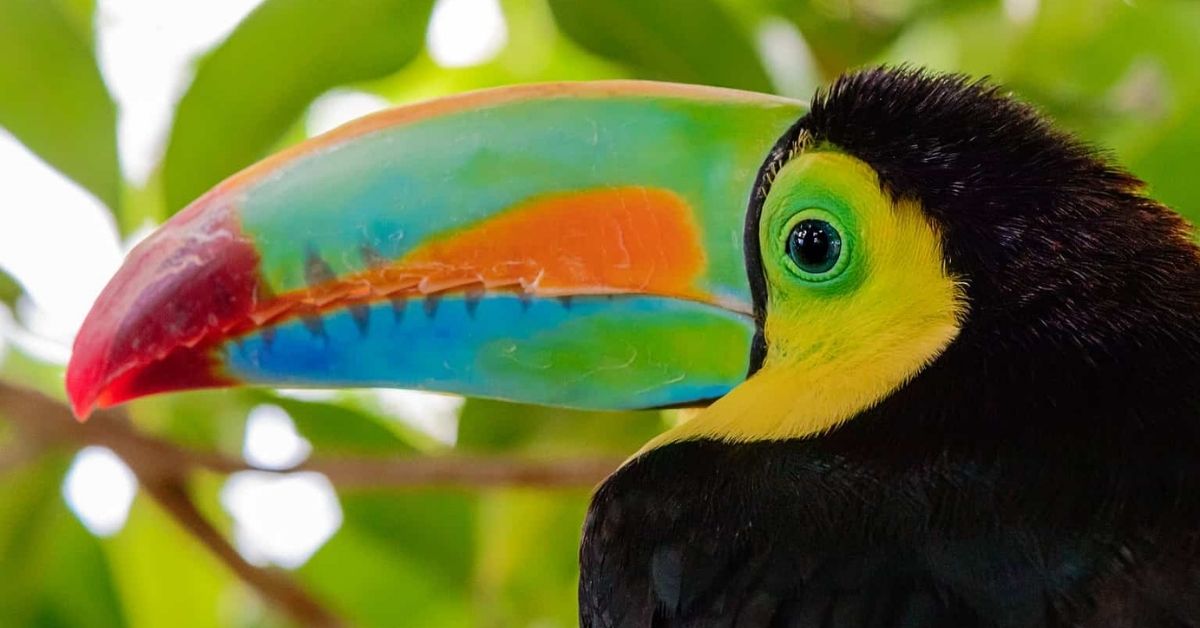The Lesser Bird of Paradise is one of the most beautiful birds in the world. Found in the rainforests of New Guinea, the Lesser Bird of Paradise is famous for its bright colors and graceful movements. Its golden feathers and green throat shine in the sunlight like jewels. People travel from around the world just to see the Lesser Bird of Paradise dance in the trees.
This amazing bird of paradise isn’t just pretty, it’s smart and full of personality. The Lesser Bird of Paradise plays an important role in the forest and helps keep nature balanced. Learning about the Lesser Bird of Paradise shows how truly magical wildlife can be.
Habitat of the Lesser Bird of Paradise

The Lesser Bird of Paradise lives in the northern forests of Papua New Guinea, Indonesia, and nearby islands such as Misool and Yapen. These regions are filled with tall trees, thick canopy, and endless shades of green. The bird thrives in lowland and hill forests, often near swamp areas and forest-edges, where food and shelter are plentiful.
This tropical environment provides everything it needs from safety during nesting to the perfect display-tree for its performances.Within these forests, the Lesser Bird of Paradise can be found hopping between the sub-canopy layers, surrounded by vines and ferns. The ecosystem is rich with fruiting plants, insects, and small animals that form part of its diet. Being native to such a biodiverse region, this bird plays a vital role in maintaining forest balance.
Courtship Dance of the Lesser Bird of Paradise
If you ever witness the courtship dance of this bird, you’ll never forget it. During breeding season, males gather in a lek, a group display area where each one performs on its chosen perch. They often strip leaves from the branch to improve visibility, making sure every movement is seen by nearby females. The male begins his display by puffing up his plumes, spreading his tail, and moving with rhythmic grace. His dark green throat glows under the light, and his yellow plumage seems almost golden.
Every performance is full of energy and charm. The male will hop, flick his wings, and even squawk with strange vocalisations to attract attention. The competition is intense, as several males may perform simultaneously, each trying to outshine the others. This polygynous behaviour means one male may win the hearts of multiple females, yet only the most skilled dancers succeed.
Feeding Habits of the Lesser Bird of Paradise
The Lesser Bird of Paradise is mostly frugivorous, which means it feeds mainly on fruit, especially figs. It’s often seen in the canopy, moving from one tree to another in search of ripe food. However, this bird doesn’t survive on fruit alone. It also eats insects, invertebrates, and other small animals to get enough protein, especially when feeding juveniles. Its diet provides essential energy and nutrition for its active life and colorful displays.
By eating fruit and later spreading the seeds, these birds help regenerate the forest, making them key contributors to the ecosystem. Their foraging habits also keep insect populations in check, creating a healthy balance in the environment. The arboreal and sub-canopy layers of the tropical forest provide the perfect feeding ground, ensuring that both males and females can thrive throughout the year.
Also Read This: Arizona Falcons
Color and Plumage of the Lesser Bird of Paradise
Few sights in nature can compare to the color and plumage of the Lesser Bird of Paradise. The male’s appearance is a masterpiece of evolution and sexual selection. His maroon-brown body, deep yellow flank plumes fading to white, and emerald-green throat make him look like a living gemstone. These ornamental feathers are not just for beauty; they play a crucial role in attraction and selection during courtship.
The female, on the other hand, shows a more subtle plumage brownish with whitish underparts which helps her blend into the forest while nesting. This difference in appearance between male and female is a perfect example of adaptation. Light filtering through the canopy enhances their colors, creating a breathtaking spectacle for anyone lucky enough to witness it.
Where to Find the Lesser Bird of Paradise
For travelers from the United States, seeing the Lesser Bird of Paradise in the wild is a once-in-a-lifetime experience. The best places to observe this bird are the forests of northern New Guinea, especially in Papua and West Papua, Indonesia. Regions like the Arfak Mountains and the islands of Yapen and Misool offer guided eco-tours that let visitors watch these birds without disturbing their natural behaviour.
The ideal time to visit is during the breeding season, when the males are most active in their display-trees. Ethical birdwatching programs, supported by local communities, ensure that tourism benefits both the people and the species. Responsible travel agencies and resources like provide valuable information for those interested in experiencing this tropical paradise firsthand.
Mating Rituals of the Lesser Bird of Paradise
After the dramatic courtship dance, successful males may mate with multiple females, a polygynous system typical of many birds-of-paradise. Once mating occurs, the female takes full responsibility for building the nest high in a tree, laying 1–2 eggs with delicate pinkish markings. She handles incubation, chick rearing, and parental care on her own, ensuring her offspring are safe from predators.
The nest is a small masterpiece made of twigs, leaves, and moss, carefully hidden among the branches. The female’s calm and steady behaviour contrasts with the male’s flamboyant performance, showing how nature divides roles for survival. These mating rituals reveal the deep connection between beauty, skill, and life in the forest.
Conservation of the Lesser Bird of Paradise
The Lesser Bird of Paradise is currently listed as Least Concern by the IUCN, yet that status doesn’t mean it faces no danger. Its habitat continues to shrink due to deforestation, logging, and mining activities across Papua and nearby regions. Agriculture expansion and fragmentation of the forest are serious threats that could impact future populations. The bird is also protected under CITES Appendix II, which helps regulate its international trade.
Conservation efforts focus on sustainable management and protection of intact forests, along with local education about biodiversity. Organizations like work to prevent ecosystem degradation and promote preservation. With careful attention to the environment, we can ensure that this vibrant species continues to flourish in its natural habitat.
Unique Traits of the Lesser Bird of Paradise

What makes the Lesser Bird of Paradise truly remarkable are its unique traits. Its long plumes, glowing emerald throat, and ornamental feathers are results of centuries of natural selection and adaptation. Beyond its appearance, the bird’s behaviour from lek gatherings to complex display rituals shows how intelligence and instinct work together. These traits also highlight the delicate balance between survival and attraction that drives evolution.
Scientists studying this species have discovered fascinating details about its communication and posture. The bird’s performance is not random; it follows an intricate rhythm that maximizes its visual appeal. Compared to familiar birds like peacocks, the Lesser Bird of Paradise displays even more elegance and precision, proving that beauty in nature often serves a deeper purpose.
The Lesser Bird of Paradise in Culture and Art
Throughout history, the Lesser Bird of Paradise has held a powerful place in culture and art. Indigenous Papuan tribes use its feathers in traditional dances and ceremonial costumes, symbolizing power and spiritual connection. Early European explorers once believed these birds had no feet, calling them “birds from heaven.” Their vibrant plumage later inspired royal decorations and fine art across the world.
Today, this species continues to captivate modern artists, photographers, and wildlife lovers. It appears in documentaries, paintings, and conservation campaigns that aim to remind us of Earth’s fragile biodiversity. The Lesser Bird of Paradise isn’t just a bird; it’s a living masterpiece that represents the harmony, diversity, and beauty of the rainforest.
FAQs
What is the lesser bird of paradise habitat?
The Lesser Bird of Paradise lives in the rainforests of northern New Guinea and nearby islands like Misool and Yapen, often in lowland, hill, and swamp forests.
What is so special about birds-of-paradise?
Birds-of-paradise are famous for their vivid colors, elaborate plumage, and unique courtship dances that attract mates.
What bird is called the Jesus bird?
The Jesus Bird is the Western Grebe, known for its ability to run across water while taking off, giving the illusion of walking on water.
Conclusion
The Lesser Bird of Paradise is a true wonder of nature. Its bright colors, long feathers, and beautiful dance make it one of the most special birds on Earth. Watching the Lesser Bird of Paradise in its rainforest home is like seeing art come alive. Every move shows grace and beauty that few other birds can match.
Protecting the Lesser Bird of Paradise is very important. Its forests must stay safe and healthy. When we care for nature, we protect this amazing bird of paradise and many others too. The Lesser Bird of Paradise reminds us how wonderful the natural world is and why it deserves our love and care.

Spiritual Vora shares deep insights on dreams, angel numbers, spiritual meanings, and inner healing. Our mission is to guide souls toward clarity, growth, and divine connection through uplifting and enlightening content.

